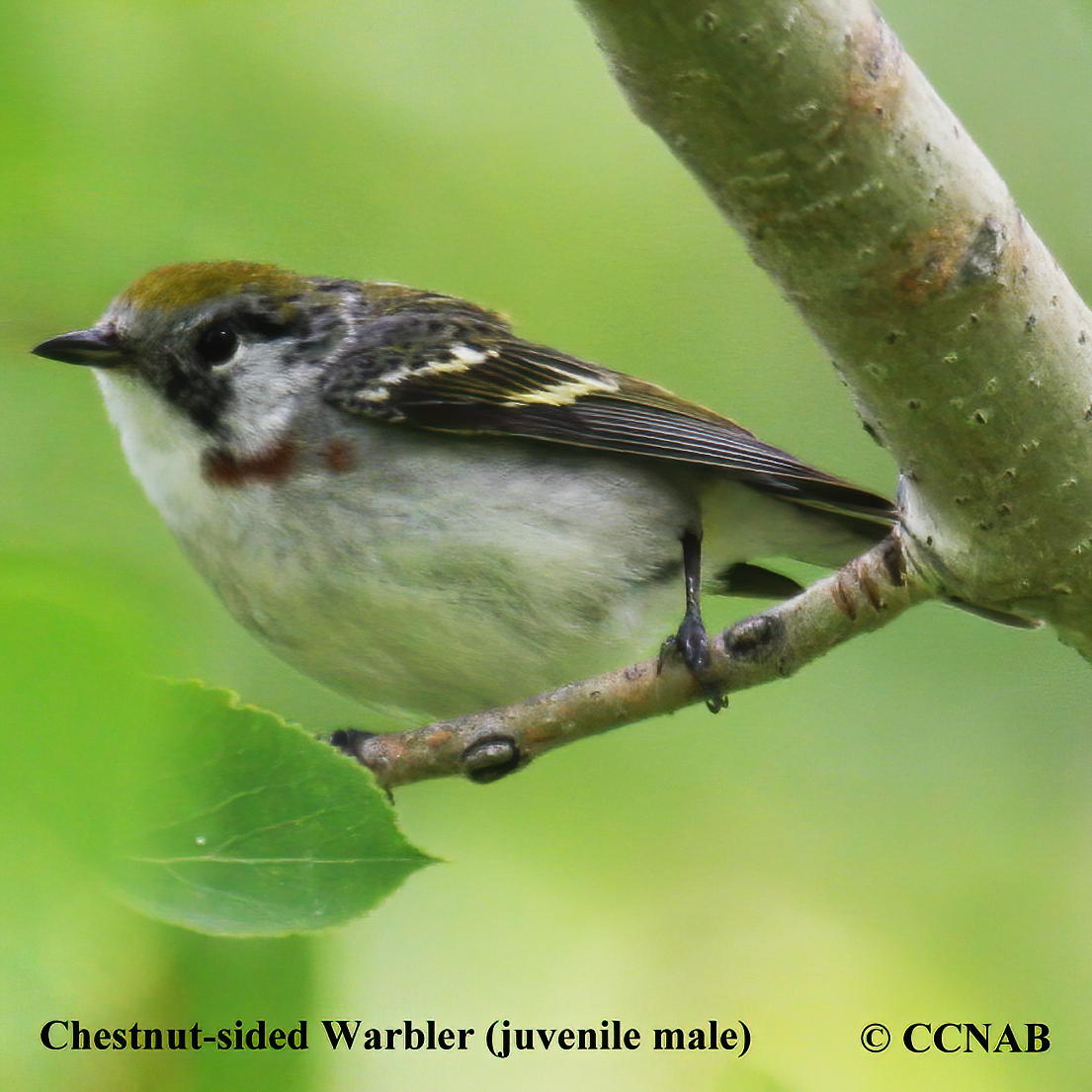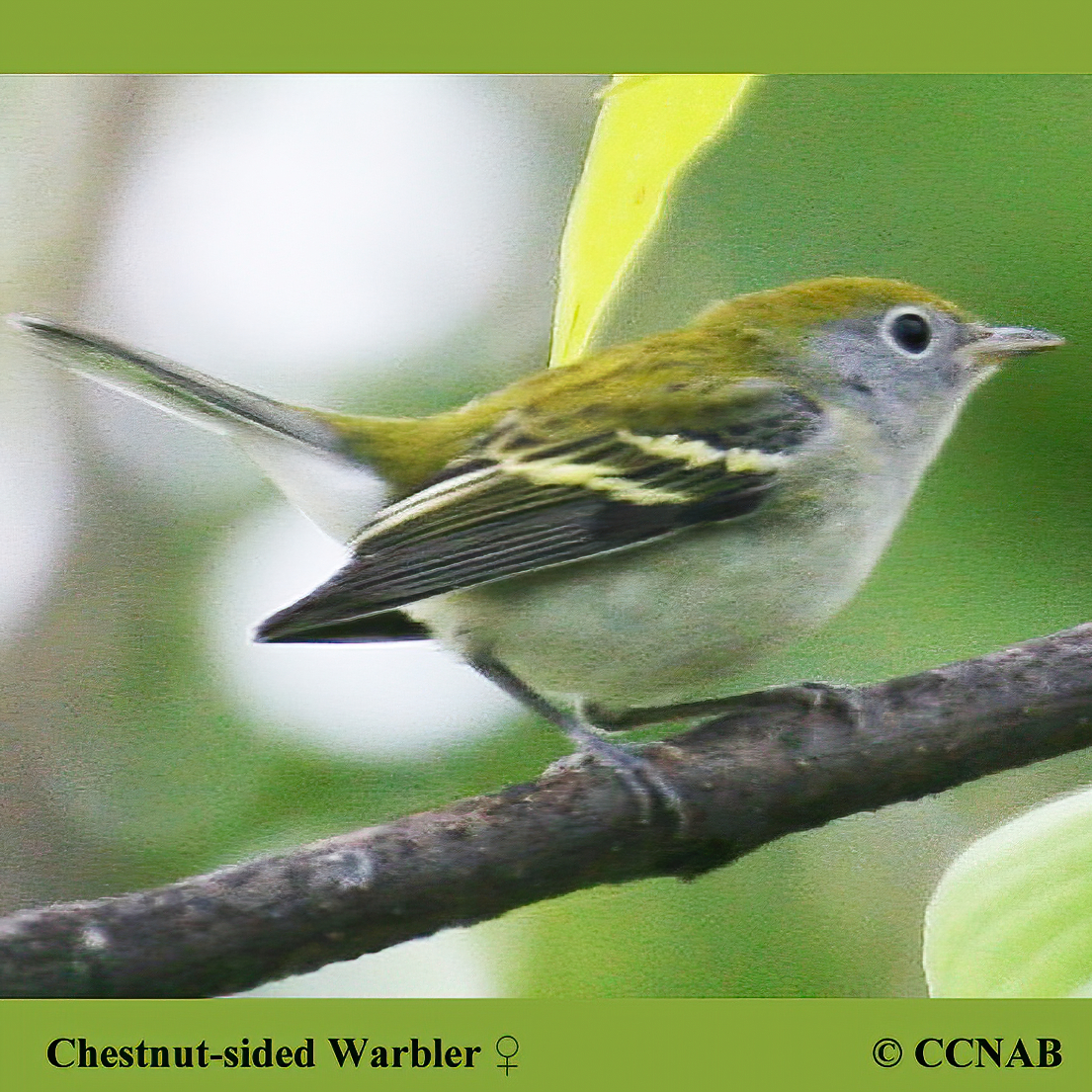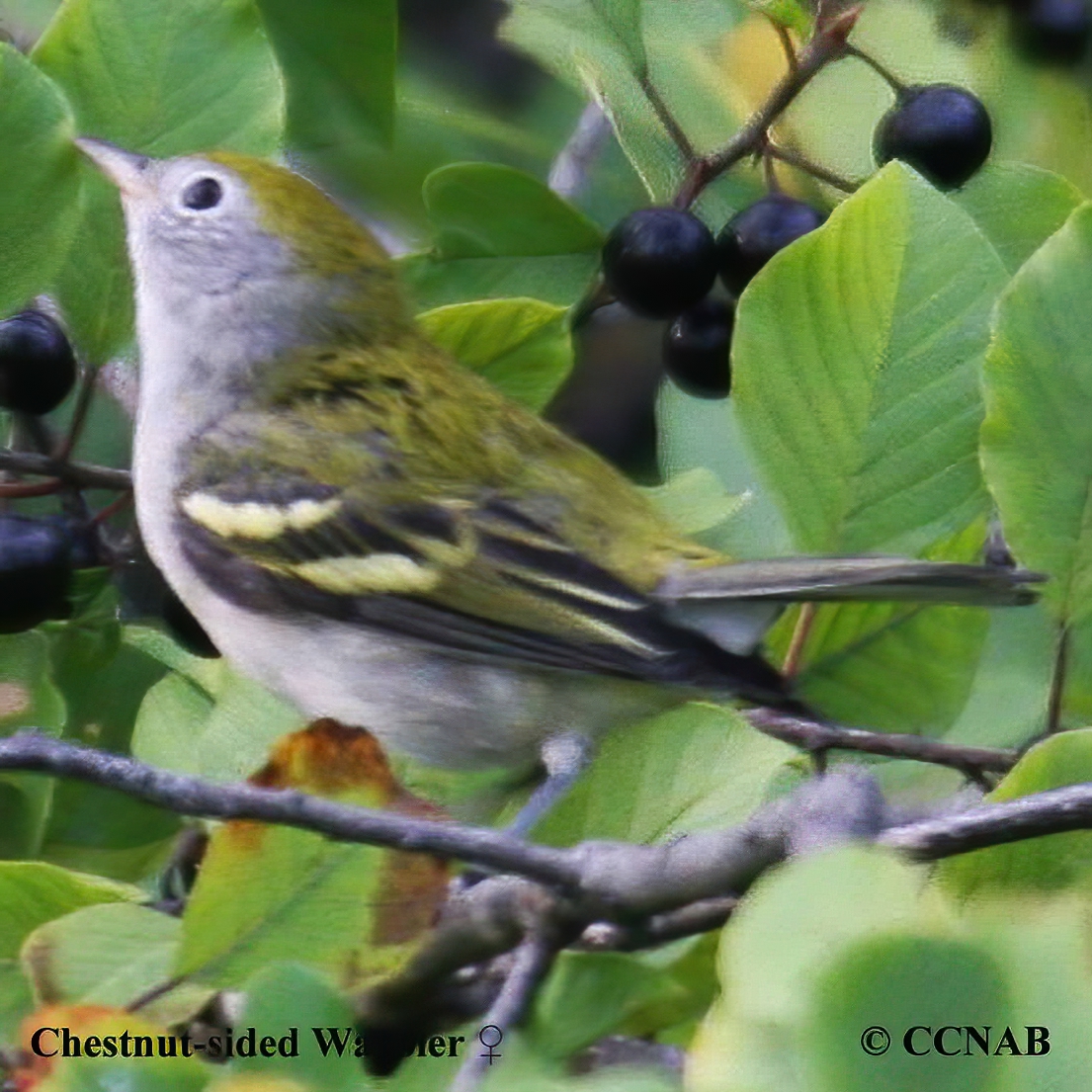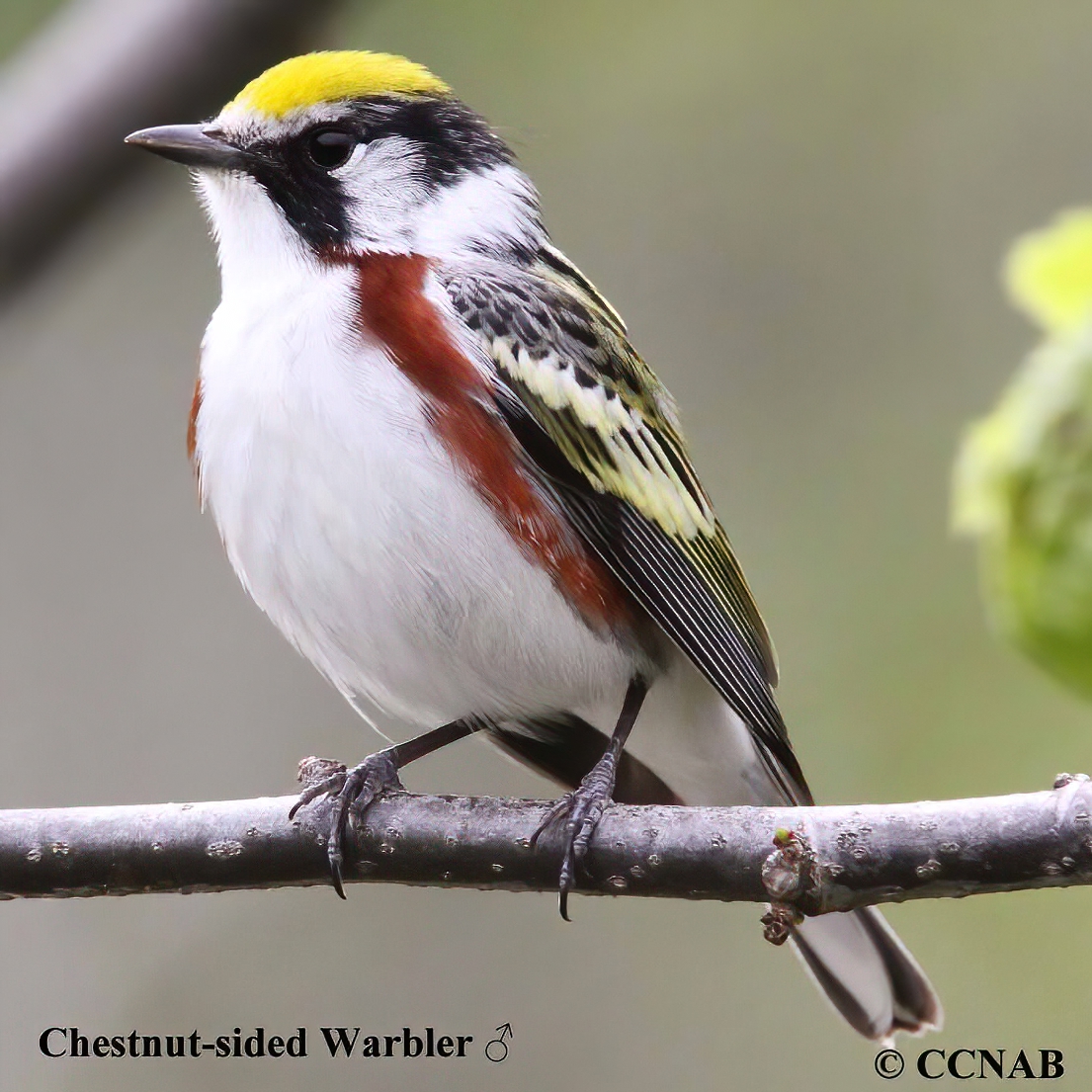North American Bird Search Box
This search box can be used to find bird species using bird's english, french or latin name, or to identify bird by its 4 letter Alpha Code
Field Guide for all the Birds of North America
Chestnut-sided Warbler
4 Letter (english names) Alpha Code: CSWA (1)
Paruline à flancs marron
Setophaga pensylvanica
Information, images and range maps on over 1,000 birds of North America, including sub-species, vagrants, introduced birds and possibilities
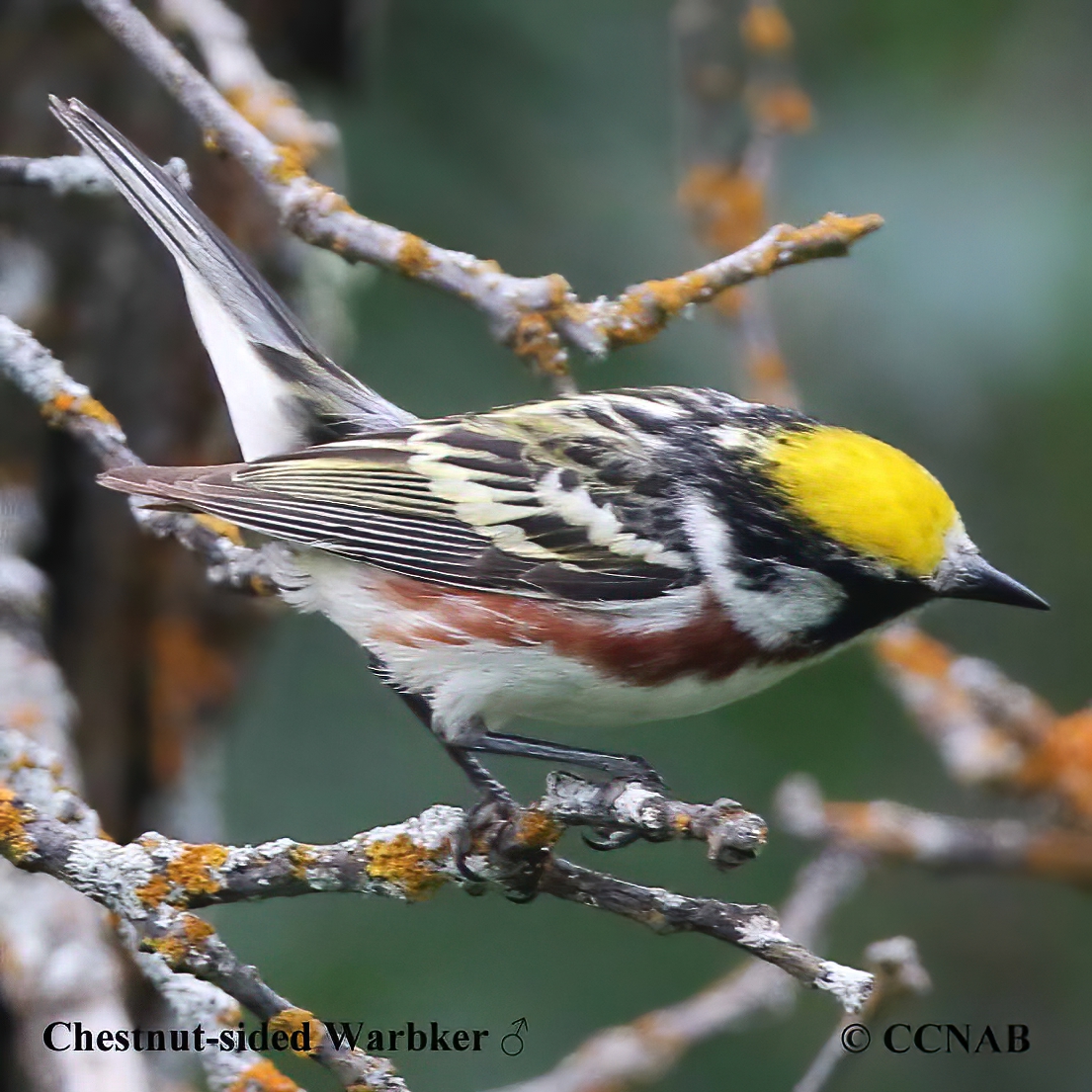
Species: The Chestnut-sided Warbler (Dendroica castanea) finds its habitat in overgrown fields, second growth forests and bushy meadows. It shows the same characteristics as the wrens and gives the appearance of drooping wings, when seen perched. It is easy to approach when it is singing, usually in bushes or smaller trees, in an open area. It greatly increased in numbers in the 1900s because of all available open space from abandoned farmsteads. It was considered a rare bird when it was first seen in the 1800s, mainly because the continent was covered in mature trees.
Distinctions: The male in breeding plumage has a yellow crown and has a black supercilium, its back is streaked black and white, black wings, with two white wingbars, white cheeks, with a black moustache, chestnut-coloured flanks, white breast and undertail coverts. In non-breeding the male is mostly gray and lime green but still shows chestnut flanks. The female is very similar with all of the male's characteristics but to a lesser degree. The juvenile has greenish cheeks, crown, nape and back, dark wings with two white wingbars, greenish-white breast and supercilium.
Voice: Chipping call, buzzy notes, songs sound like "very pleased to MEET-CHA", repeated often.
Nesting: Three to five white to off-white coloured eggs with brown markings. Builds its nest low in shrubs of trees. The nest is composed of leaves, twigs, moss and lined with fine grasses and hair.
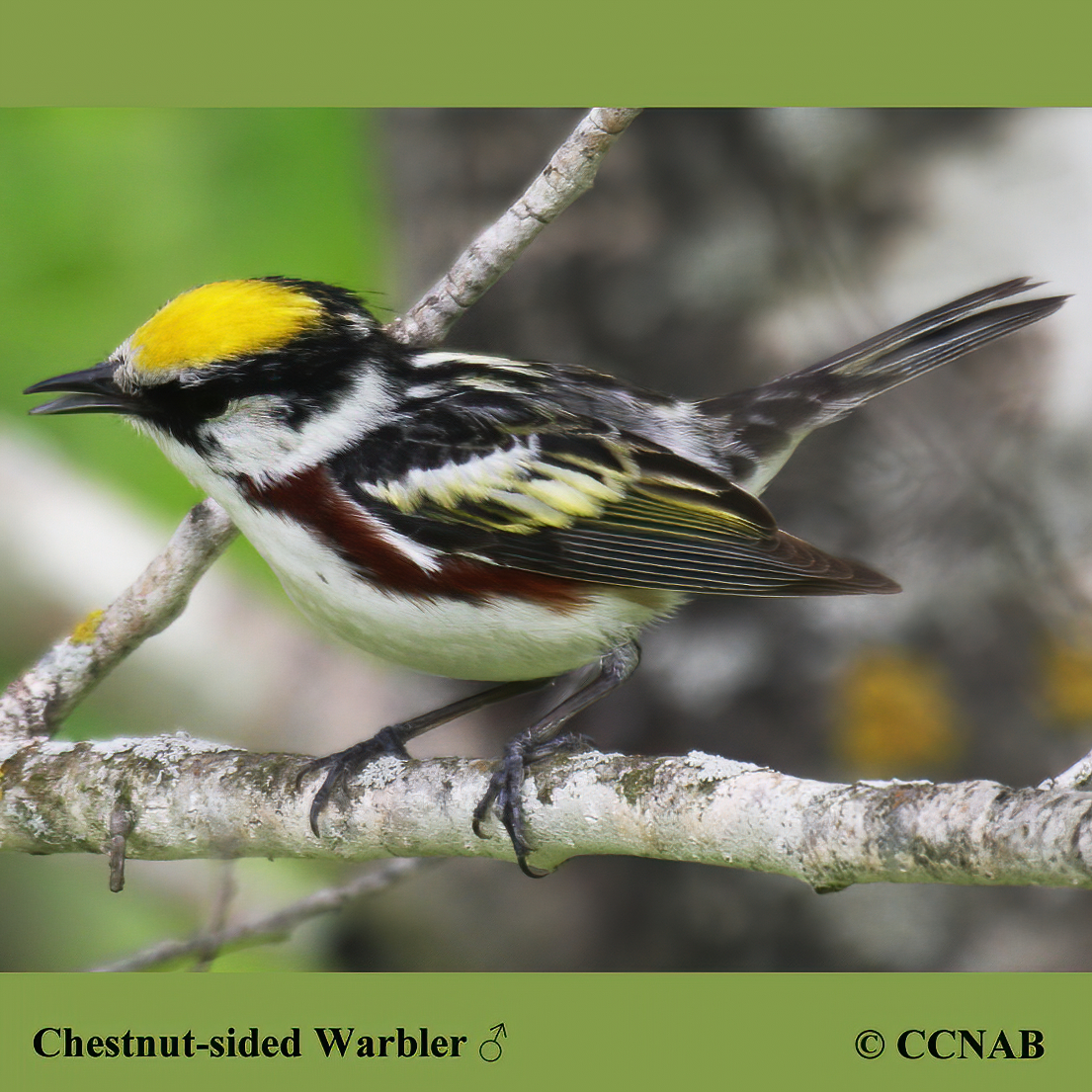
Life, Habitat & Pictures of North American Warblers
| B L | W W | W | Family | Latin Name |
|---|---|---|---|---|
| 5" 12.7cm | 7.75" 19.7cm | 0.35oz 9.9g | Parulidae | Setophaga pensylvanica |
North American Birds Videos
- Click here - Male breeding plumage
- Click here - Male breeding plumage
- Click here - Male breeding plumage
North American Bird Calls
- Click here
- Summer
- Year Around
- Winter
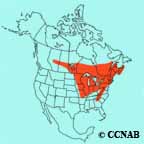
Distribution: Found from the lower half of Quebec to James Bay, west across the provinces to British Columbia, south to Missouri, east to Mississippi, northeast to Virginia and to the Atlantic coast, north to all of New Brunswick and Nova Scotia. Spends it winters in Central America.
Reference to Other Bird Site:
ABA - American Birding Association This site represents an organization that maintains official records of all birds species that have been proven to have been seen inside the perimeters of the North American Continent and the surrounding bodies of water. Regular revised versions are posted to keep the bird list current at all times. This is the list used by all serious birders over their lifetime. You may be aware of the movie called the "Big Year". It was with this list that all the competing birders used in an attempt to set a new record as to how many bird species that could be seen by an individual birder in one calendar year.
